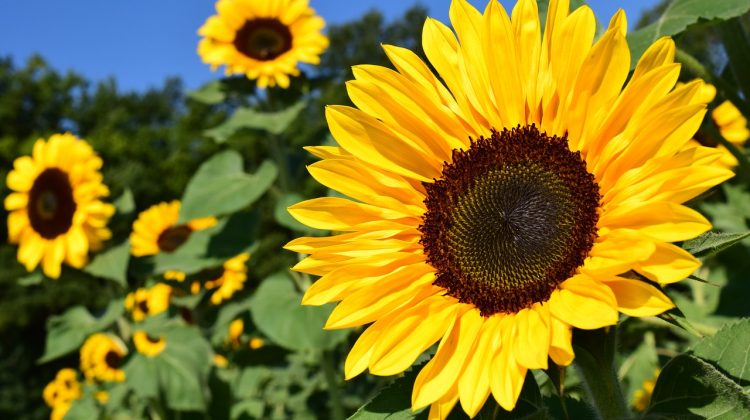
Sunflowers are a beautiful addition to any garden or landscape. These bright, cheerful flowers can grow up to 12 feet tall and add a pop of color to any space.
Growing sunflowers is relatively easy and can be done by gardeners of all levels.
Before you start planting sunflowers, it’s important to know when and how to plant them. Sunflowers need a lot of sunshine, so make sure to choose a sunny spot in your garden.
You can either plant sunflower seeds directly in the soil or start them indoors. Once you have your planting location and method figured out, it’s time to get started.
In this article, we will guide you through the steps of growing sunflowers. We will cover everything from planting the seeds to caring for the plants as they grow.
Whether you’re a seasoned gardener or a beginner, you’ll find helpful tips and tricks to ensure your sunflowers grow tall and strong. Let’s get started!
In this article, we'll cover
1. Choosing the Right Sunflower Variety
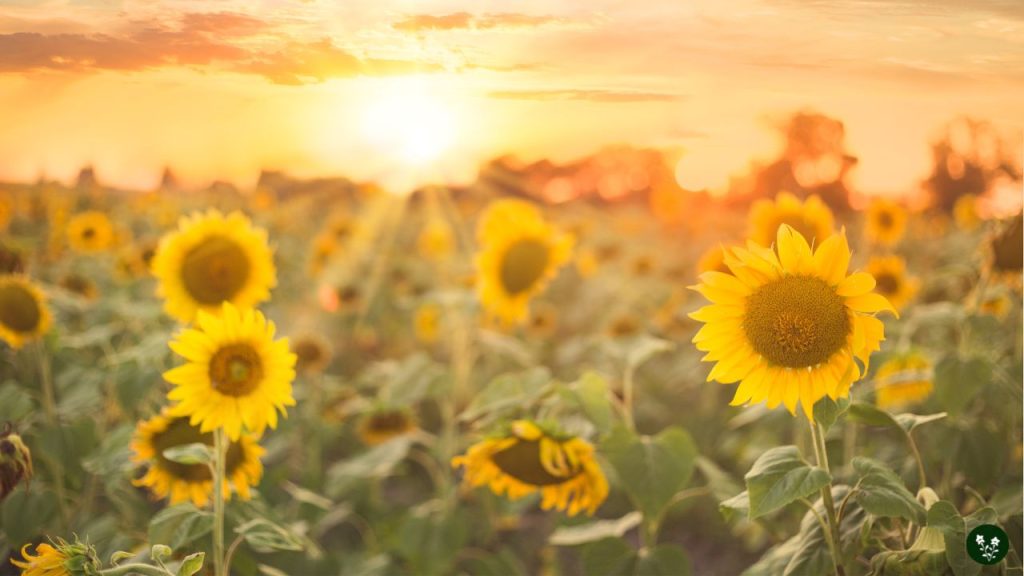
Different types of sunflowers and their characteristics
Sunflowers come in different varieties, each with its unique characteristics. Here are some of the most common types of sunflowers and their features:
- Single stem sunflowers – these are the classic sunflowers with one large flower head on a tall stem.
- Branching sunflowers – these types produce multiple smaller flowers on several stems branching out from the main stem.
- Pollenless sunflowers – these are ideal for indoor arrangements as they don’t produce pollen that can cause allergies.
- Dwarf sunflowers – these are perfect for small gardens or pots as they grow up to 2 feet tall.
- Tall sunflowers – these can grow up to 12 feet tall and are perfect for creating a stunning backdrop in your garden.
Factors to consider when choosing a variety of sunflowers
When choosing the right sunflower variety, there are several factors to consider:
| Factor | Considerations |
|---|---|
| Size | Consider the space you have available to grow sunflowers and choose a variety that fits that space. |
| Color | Choose a color that complements your garden or home decor. |
| Blooming time | If you want continuous blooms, choose a variety that blooms throughout the summer or stagger your planting. |
| Seed production | If you plan to harvest seeds, choose a variety that produces large, plump seeds. |
| Disease resistance | Some varieties are more resistant to diseases, so choose those if you want to minimize the risk of plant diseases. |
Consider these factors when choosing the right sunflower variety for your garden. With the right variety, you can enjoy these beautiful blooms all summer long.
2. Preparing the Soil for Sunflowers
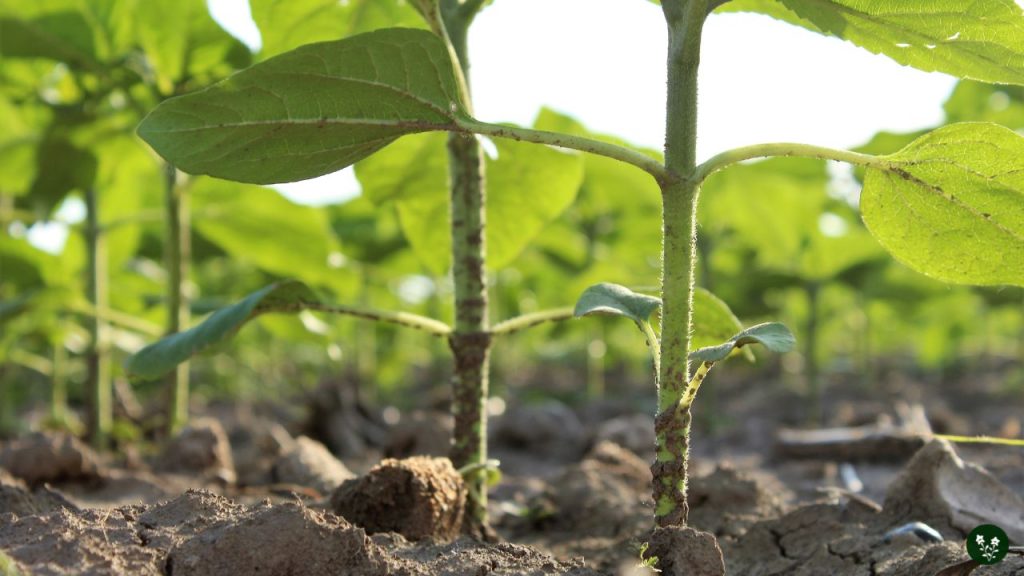
Ideal Soil Conditions for Growing Sunflowers
Sunflowers prefer well-draining soil with a pH level between 6.0 and 7.5. They can tolerate a wide range of soil types, but they will grow best in loose, loamy soil that is rich in organic matter.
Sunflowers also need plenty of sunlight, so choose a planting location that receives at least six hours of direct sunlight per day.
Testing the pH Level of Soil
Before planting sunflowers, it’s important to test the pH level of your soil. You can do this using a simple soil testing kit, which you can purchase at most garden centers.
Follow the instructions provided with the kit to collect a soil sample and test the pH level. If the pH level is too low or too high, you can adjust it by adding lime to raise the pH or sulfur to lower it.
Adding Organic Matter to the Soil
Adding organic matter to your soil can help improve its texture and fertility, which can lead to healthier and more vigorous sunflowers.
You can add organic matter in the form of compost, aged manure, or other organic materials. Spread a layer of organic matter over the soil and work it into the top few inches of soil using a garden fork or tiller.
This will help improve soil structure and provide nutrients to the sunflowers as they grow.
It’s important to note that too much organic matter can be detrimental to sunflowers, as it can cause the stems to become weak and floppy.
Aim to add no more than 2-3 inches of organic matter to your soil before planting sunflowers.
3. Planting Sunflower Seeds

When to Plant Sunflower Seeds
The best time to plant sunflower seeds is in the late spring or early summer when the soil has warmed up. In most areas, this is around mid-April to mid-June.
You can also plant sunflowers in the fall, around September, if you live in a mild climate.
How to Plant Sunflower Seeds
Planting sunflower seeds is easy and straightforward. Follow these steps:
- Choose a location with full sun exposure, at least 6-8 hours of direct sunlight per day.
- Prepare the soil by removing any debris and loosening the top 6 inches of soil.
- Plant the seeds 1 to 1 1/2 inches deep and about 6 inches apart.
- Water the seeds immediately after planting and keep the soil moist until the seedlings emerge.
- Thin the seedlings to one plant every 2 feet once they reach 2-3 inches tall.
Sunflower Seed Spacing
The spacing of sunflower seeds depends on the variety you’re planting. Generally, smaller varieties can be planted closer together, while larger varieties need more space.
Here are some guidelines:
| Variety | Spacing |
|---|---|
| Dwarf sunflowers | 6-12 inches apart |
| Medium-sized sunflowers | 12-24 inches apart |
| Giant sunflowers | 24-36 inches apart |
By following these guidelines, you’ll ensure that your sunflowers have enough space to grow and thrive.
4. Sunflower Care

Watering Sunflowers
Sunflowers need regular watering, especially during hot and dry weather. Water the plants deeply once a week, giving them about an inch of water each time.
However, be careful not to overwater the plants, as this can lead to root rot. To check if the soil is moist enough, stick your finger about an inch into the soil. If it feels dry, it’s time to water.
Fertilizing Sunflowers
Sunflowers are not heavy feeders, but they benefit from an occasional dose of fertilizer. Apply a balanced fertilizer, such as a 10-10-10 or 5-10-5 formula, when the plants are about 6 inches tall.
Repeat the application every 4-6 weeks until the plants start to bloom. Be sure to follow the instructions on the fertilizer package, as over-fertilizing can damage the plants.
Staking Sunflowers
Tall sunflower varieties may need staking to prevent them from toppling over in strong winds or heavy rain. To stake a sunflower, gently tie the stem to a sturdy support, such as a bamboo stake, with soft plant ties or twine.
Be sure not to tie the stem too tightly, as this can damage the plant. Alternatively, you can plant sunflowers near a fence or wall that can serve as a natural support.
Deadheading Sunflowers
Deadheading, or removing spent flowers, can encourage sunflowers to produce more blooms. Cut off the spent flowers as soon as they start to wilt, using sharp pruning shears or scissors.
Cut the stem just above the first set of leaves. This will also prevent the plant from wasting energy on producing seeds.
5. Dealing with Common Sunflower Problems
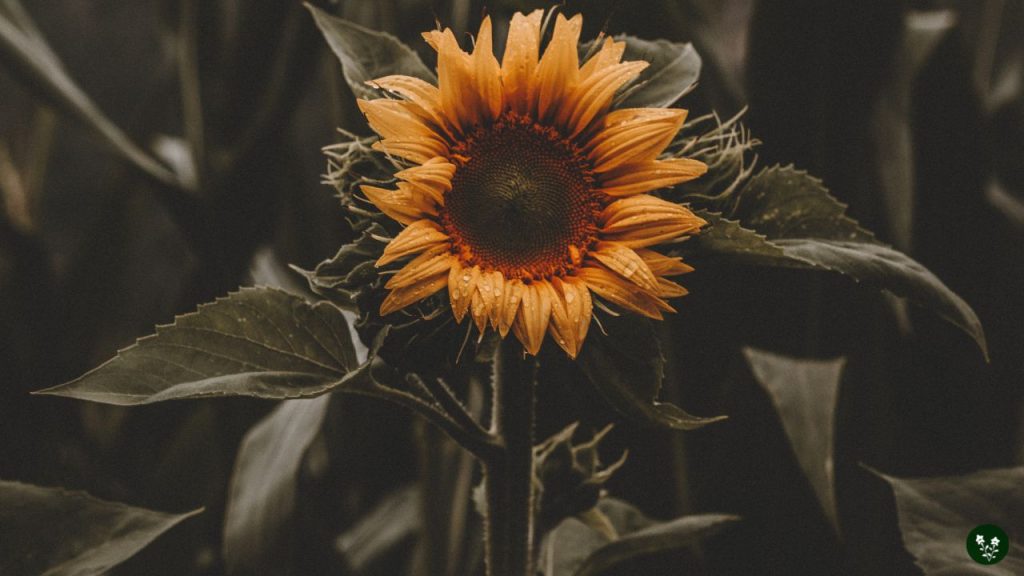
Pests and Diseases that Can Affect Sunflowers
Sunflowers are susceptible to pests and diseases, including aphids, caterpillars, spider mites, downy mildew, powdery mildew, and rust.
These can cause damage to the leaves and flowers of the sunflower plant, and even lead to its death.
Preventing and Treating Sunflower Problems
To prevent pest infestations, you can use insecticidal soap or neem oil, or introduce natural predators like ladybugs and lacewings.
To prevent diseases, ensure that your plants are well-ventilated, not overcrowded, and use fungicides when necessary.
Maintaining Healthy Sunflowers
To keep your sunflowers healthy, make sure they are well-nourished with organic fertilizers like compost and manure, and watered regularly but not overwatered.
You can also use various methods such as pruning and removing infected leaves to treat sunflower problems.
Always follow the instructions on the labels of the products you use to prevent any harm to yourself or the environment.
While pests and diseases can cause problems for sunflowers, with proper care and attention, you can prevent and treat these issues and enjoy beautiful and healthy sunflowers in your garden.
6. Harvesting Sunflowers
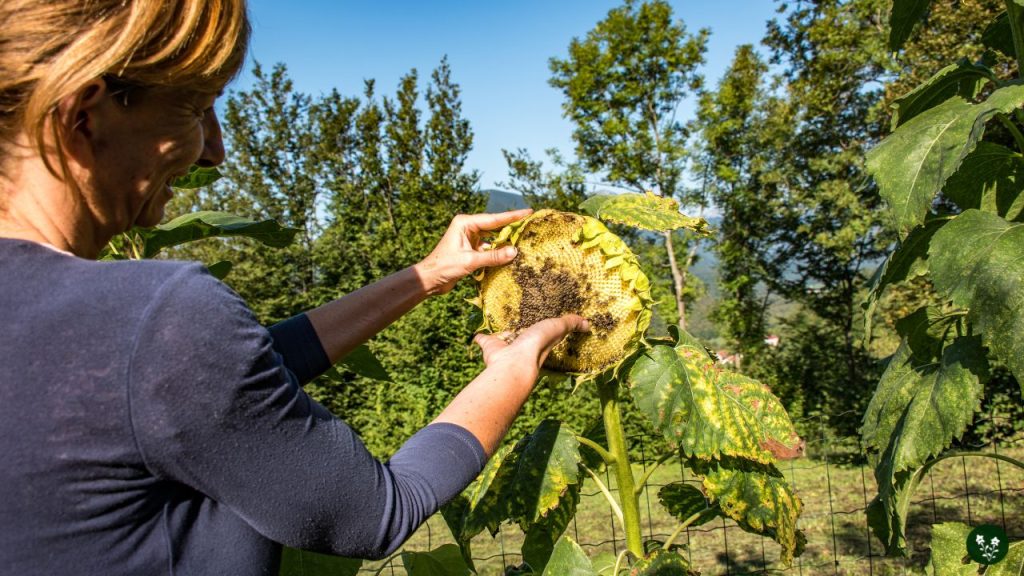
How to tell when sunflowers are ready to harvest
Harvest sunflowers when their petals become dry and begin to fall. The green base of the head will turn yellow and eventually brown.
Seeds will also start to turn brown and black, and the back of the head will turn brown and dry. The seeds should be plump and firm, not soft or shriveled.
How to harvest sunflowers
Cut the stalk with sharp scissors or pruners, about one foot down from the flower head, and place in a container that can catch any loose seeds.
If you’re harvesting multiple sunflowers, it’s best to label them with the date of harvest to keep track of their freshness.
After cutting, shake the head gently to remove any remaining seeds. You can also use a fork or your fingers to loosen the seeds from the head.
Once the seeds are removed, you can discard the rest of the plant or use it for compost.
How to store sunflowers
Store sunflower seeds in a cool, dry place in an airtight container. You can store them in the shell or remove the shell before storing. If you remove the shell, make sure to store the seeds in a sealed container to prevent them from going rancid.
If you plan to use the seeds for bird feed, you can leave them in the shell and hang the head in a bird feeder.
Harvesting sunflowers is a rewarding experience, and with proper care and storage, you can enjoy their beauty and nutritional benefits for months to come.
Conclusion
Growing sunflowers can be a fun and rewarding experience for gardeners of all skill levels.
By following the tips and guidelines outlined in this article, you can successfully plant, grow, and care for sunflowers in your own garden.
Remember to choose a sunny location with well-draining soil and to plant your sunflower seeds at the appropriate depth.
Water your sunflowers regularly and fertilize them as needed to promote healthy growth.
When it comes time to harvest your sunflowers, be sure to wait until the petals have fallen off and the seeds are fully mature.
You can then cut the heads off the sunflowers and hang them upside down in a dry, well-ventilated area to allow the seeds to dry out.
Whether you’re looking to add some color and beauty to your garden or want to try your hand at growing your own sunflower seeds, these tips and guidelines should help you get started on the right foot.
Happy gardening!